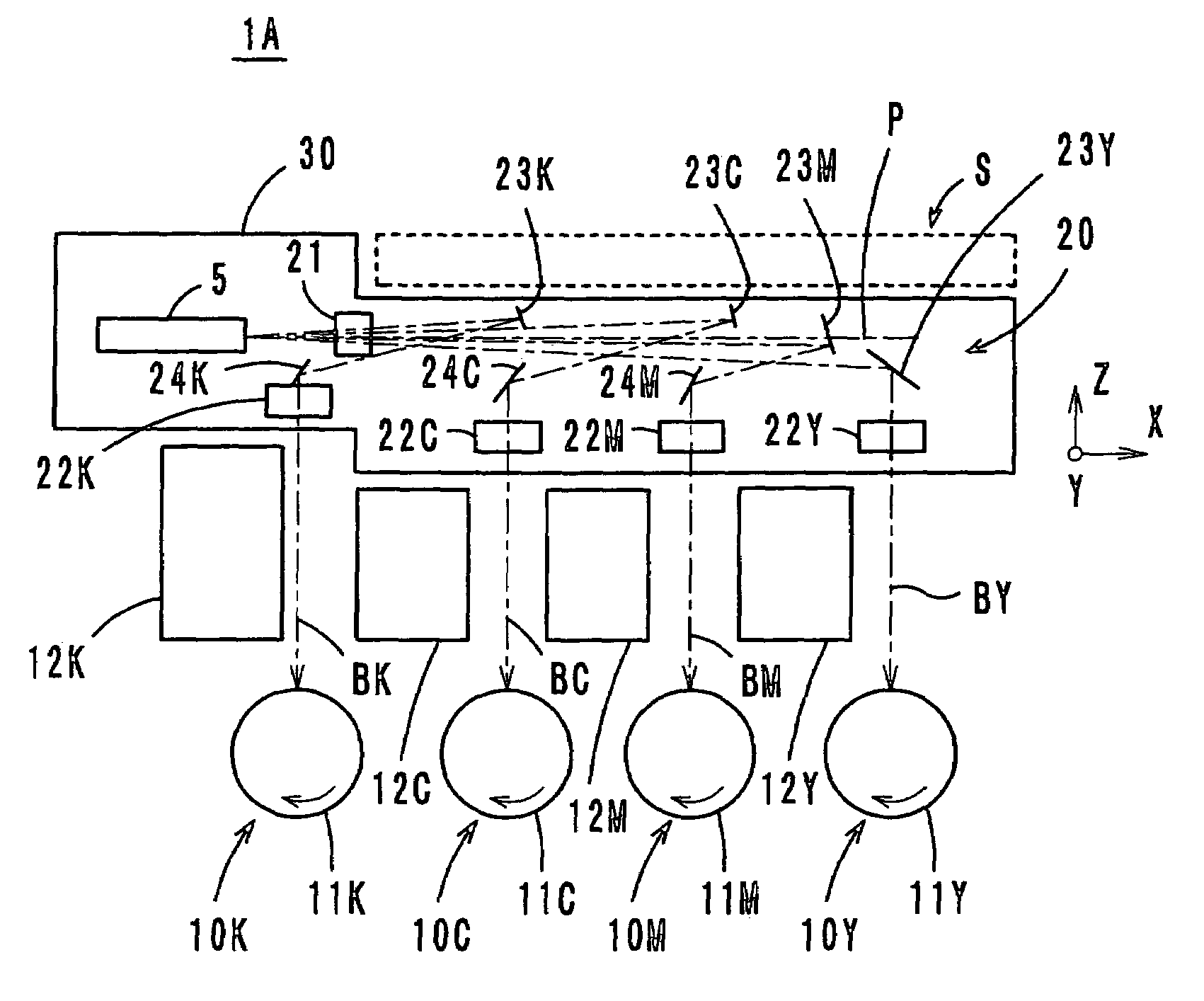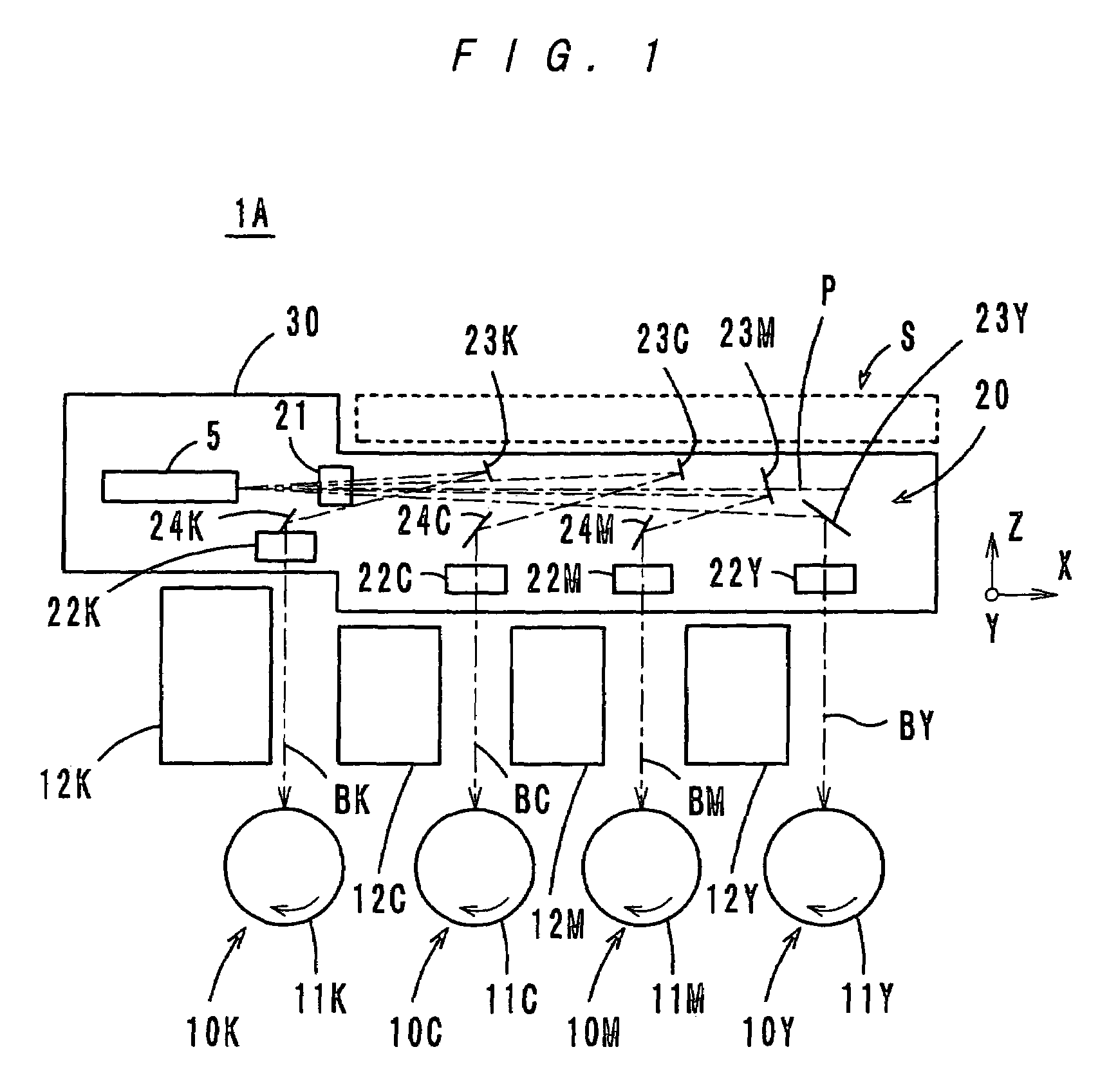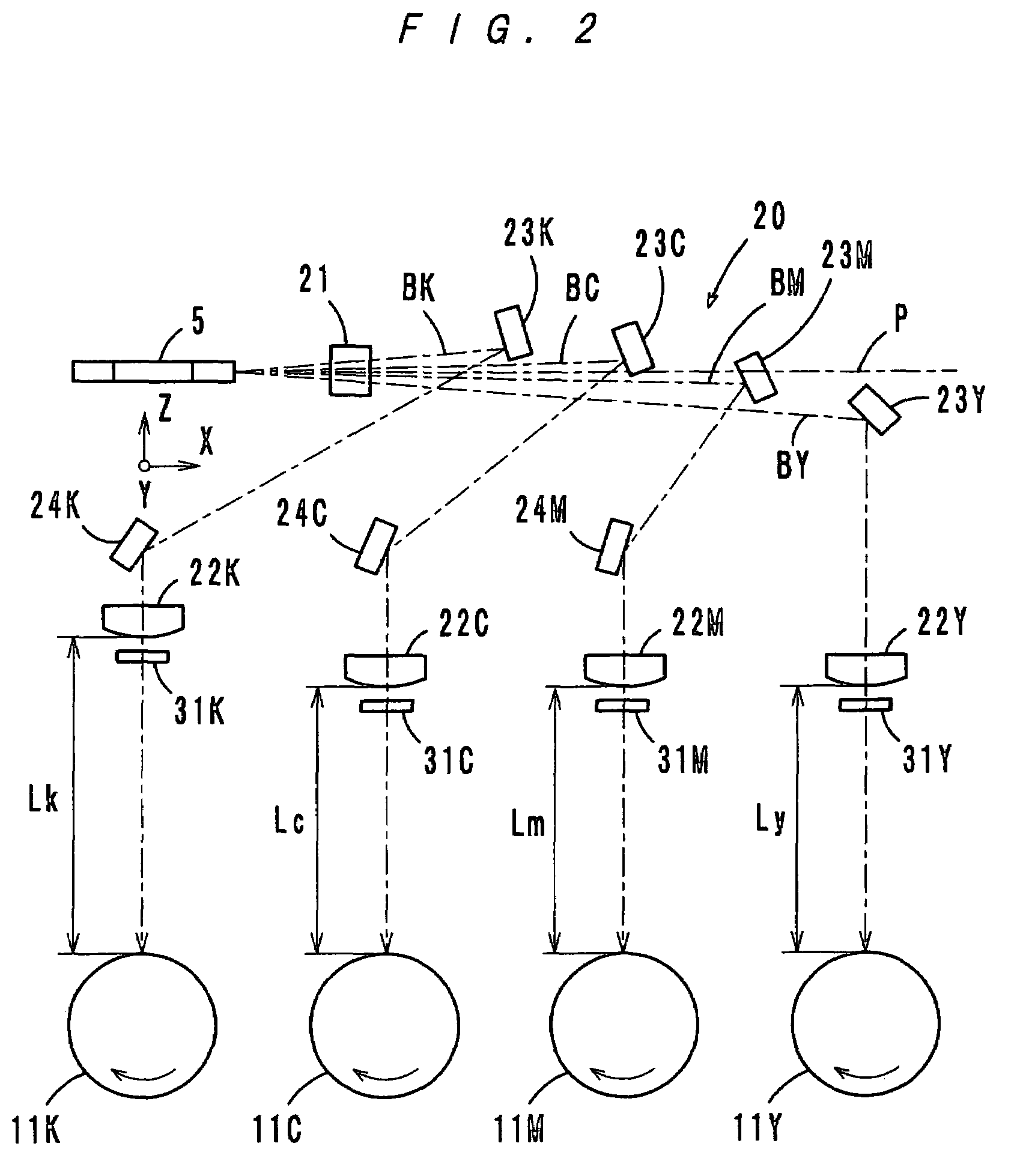Laser scanning optical apparatus having exclusive optical elements at varying distances from receiving surfaces
a scanning optical and optical element technology, applied in the field of laser scanning optical apparatus, can solve the problems of increasing the size of the increase in the cost, and achieve the effect of downsizing the image forming apparatus
- Summary
- Abstract
- Description
- Claims
- Application Information
AI Technical Summary
Benefits of technology
Problems solved by technology
Method used
Image
Examples
first embodiment
See FIGS. 1 and 2
[0027]FIGS. 1 and 2 show a laser scanning optical apparatus 1A according to a first embodiment of the present invention. The laser scanning optical apparatus 1A is used for image exposure in an electrophotographic image forming apparatus of a tandem type. The apparatus 1A has four image forming units 10Y, 10M, 10C and 10K which are arranged in parallel, and laser beams BY, BM, BC and BK are scanned on photosensitive drums 11Y, 11M, 11C and 11K which are provided in the image forming units 10Y, 10M, 10C and 10K, respectively. By the laser beam scanning, images (electrostatic latent images) are formed on the photosensitive drums 11Y, 11M, 11C and 11K and are developed into a yellow, a magenta, a cyan and a black toner image. These toner images are transferred onto an intermediate transfer member (not shown) and combined (first transfer), and the thus made composite image is transferred onto a transfer paper (second transfer). This image forming process by use of an im...
second embodiment
See FIGS. 3 and 4
[0033]FIGS. 3 and 4 show a laser scanning optical apparatus 1B according to a second embodiment of the present invention. In the second embodiment, the second lenses 22Y, 22M, 22C and 22K are located such that the distance Ly between the lens 22Y and the photosensitive drum 11Y, the distance Lm between the lens 22M and the photosensitive drum 11M, the distance Lc between the lens 22C and the photosensitive drum 11C and the distance Lk between the lens 22K and the photosensitive drum 11K are mutually different, and more specifically, Ly1B are the same as those of the laser scanning optical apparatus 1A according to the first embodiment. The same parts and the same members are provided with the same reference marks, and descriptions thereof are omitted.
[0034]In the second embodiment, further, as shown in FIG. 4, the bottom of a case 35 holding the optical elements tilts at an angle in accordance with the levels of the second lenses 22Y, 22M, 22C and 22K, and a table 3...
PUM
 Login to View More
Login to View More Abstract
Description
Claims
Application Information
 Login to View More
Login to View More - R&D
- Intellectual Property
- Life Sciences
- Materials
- Tech Scout
- Unparalleled Data Quality
- Higher Quality Content
- 60% Fewer Hallucinations
Browse by: Latest US Patents, China's latest patents, Technical Efficacy Thesaurus, Application Domain, Technology Topic, Popular Technical Reports.
© 2025 PatSnap. All rights reserved.Legal|Privacy policy|Modern Slavery Act Transparency Statement|Sitemap|About US| Contact US: help@patsnap.com



